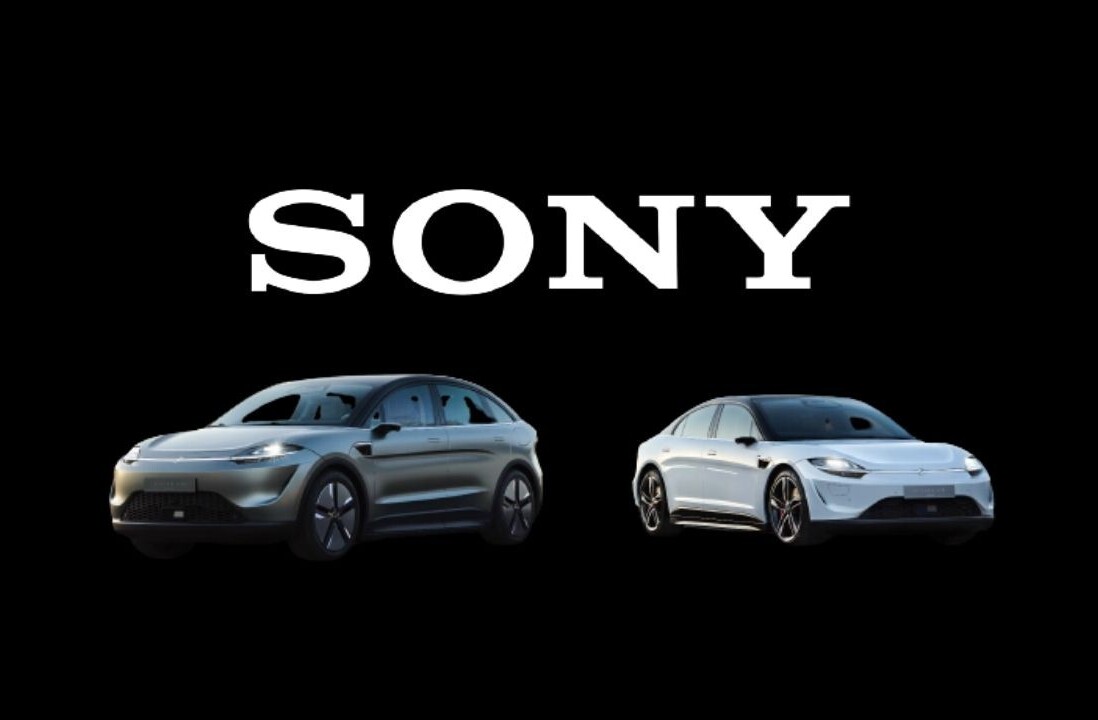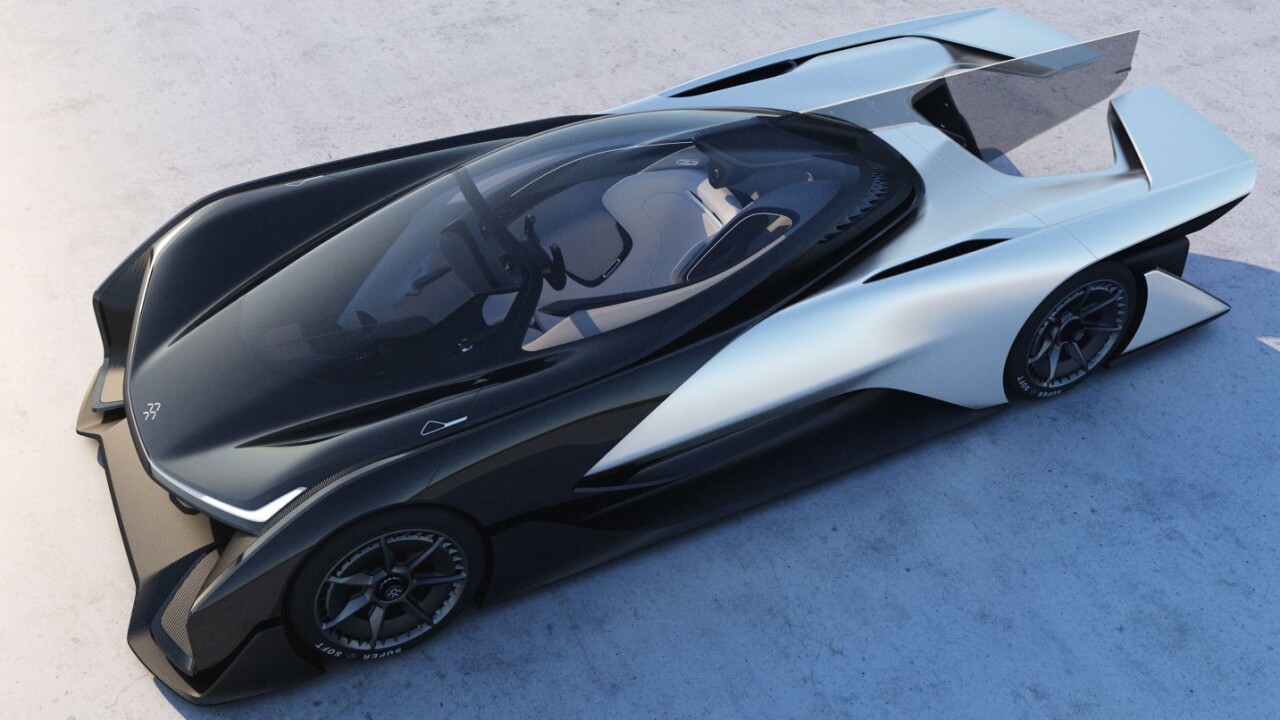
Electric vehicle maker Faraday Future (FF) showed off its first vehicle concept, the FFZero1, today at CES 2016.
The racing-inspired car was introduced by head designer Richard Kim, who led design efforts for the BMW i3, i8 and i8 Spyder concepts.
It incorporates what FF calls Variable Platform Architecture, a modular system that lets the company create new vehicle configurations from a single framework easily to meet different needs and build variants quickly. For example, batteries can be added in rows beneath the passenger compartment for extra range.
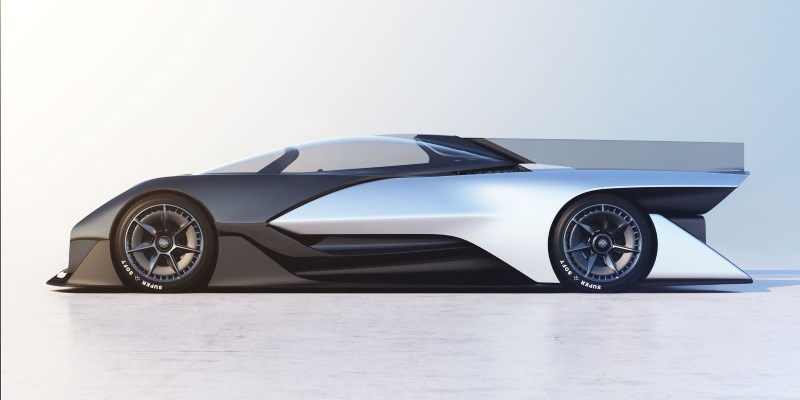
The FFZero1’s exterior features smooth lines and aerodynamic styling that make it look like a sensible reimagining of the classic Batmobile from the live action TV show based on the Lincoln Futura concept.
“Aero tunnels” seen in the front channel air through the vehicle to reduce drag and remove battery heat.
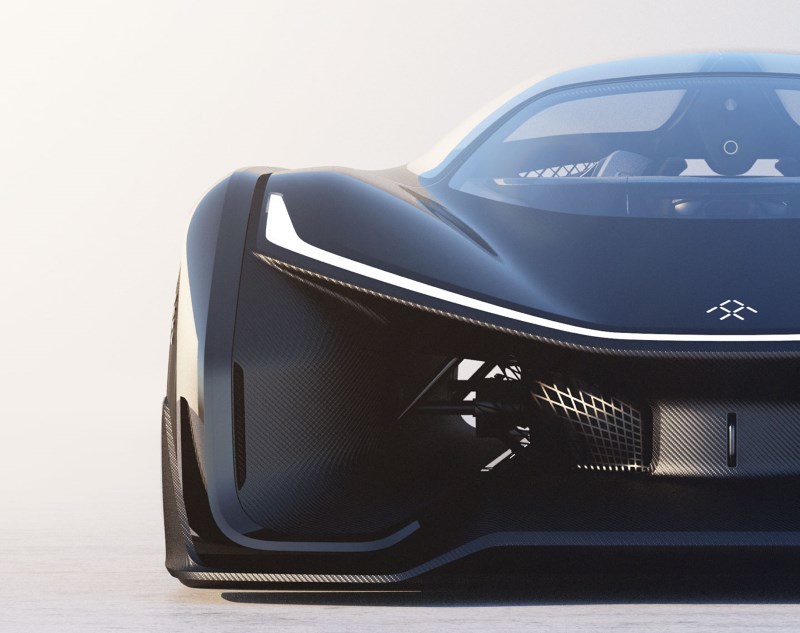
There’s a main character line that the company is calling a “UFO” line running around the side of the car to suggest that it is “not of this world.” Kim remarks that it will feature as a design cue in future FF vehicles.
On the inside is an all-white interior with a single seat for the driver at a 45-degree angle. Kim said the design for the seat was inspired by NASA’s zero-gravity research findings for maximum comfort and circulation.

The spine of the headrest has an oxygen and water supply that plug into a port in a helmet designed in-house.

You’ll also find a propeller-shaped instrument panel, and a smartphone docked in a steering wheel for accessing information, navigation and secondary vehicular functions. There’s also a multi-touch screen that supports gestures and swipes, with augmented reality projected on the road.
Of course, the FFZero1 isn’t going to hit the streets anytime soon. Kim said, “It’s an extreme testbed for concepts we’re working on for up-and-coming vehicles.” The company said that it plans to deliver its first production vehicle in a couple of years.
Along with unveiling the concept at CES, FF took the opportunity to introduce its strategic partner, Chinese entertainment and electronics firm LeTV. The two companies will work together on vehicular and self-driving technologies as well as new ways to bring internet connectivity and digital content to FF vehicles.
The company believes it can move quicker than its competition because of its use of all-digital technology for designing vehicles and visualizing them in VR before building anything.
It has moved fairly quickly to establish its operations: in only 18 months, the company has built a team of 550 employees in California alone, with backgrounds in firms like Apple, BMW, Boeing, Ford, GM, Jaguar and Tesla. It’s also set to spend $1 billion to begin building its 3 million sq. ft. manufacturing plant in North Las Vegas in the next few weeks.
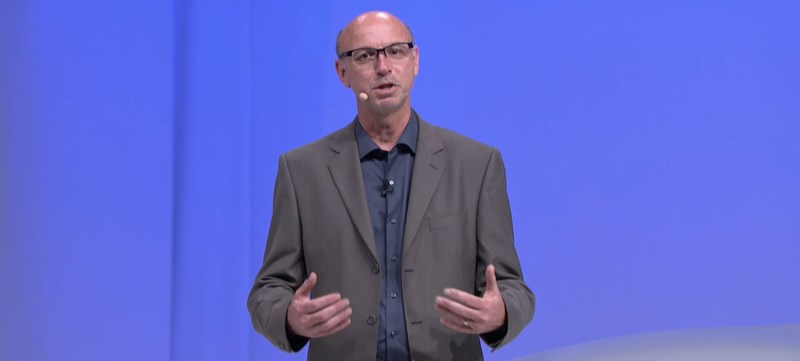
Senior VP of R&D and product development Nick Sampson said, “You don’t need a 100-year legacy in the automotive industry to define what the next generation of transportation needs to look and feel like.” It’ll be interesting to see if FF can make good on that claim.
Get the TNW newsletter
Get the most important tech news in your inbox each week.

